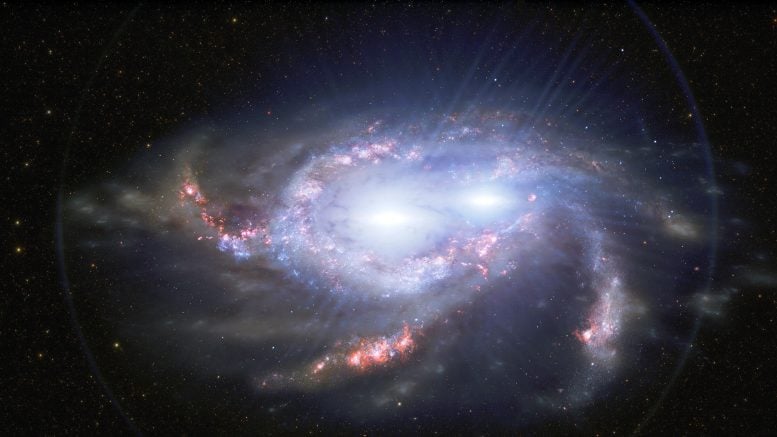
Astronomers have discovered two pairs of quasars in the distant Universe, about 10 billion light-years from Earth. In each pair, the two quasars are separated by only about 10,000 light-years, making them closer together than any other double quasars found so far away. The proximity of the quasars in each pair suggests that they are located within two merging galaxies. Quasars are the intensely bright cores of distant galaxies, powered by the feeding frenzies of supermassive black holes. One of the distant double quasars is depicted in this illustration. Credit: International Gemini Observatory/NOIRLab/NSF/AURA/J. da Silva
Gemini North spectroscopically resolves a pair of quasars that are closer together than any yet discovered in the distant Universe.
Astronomers have found two close pairs of quasars in the distant Universe. Follow-up observations with Gemini North spectroscopically resolved one of the distant quasar pairs, after their discovery with the Hubble Space Telescope and Gaia spacecraft. These quasars are closer together than any pair of quasars found so far away, providing strong evidence for the existence of supermassive black hole pairs as well as crucial insight into galaxy mergers in the early Universe.
The quasars in each of the two pairs are separated by just over 10,000 light-years, suggesting that they belong to two merging galaxies.[1] Double quasars are scientifically interesting but rare objects — particularly in the most distant reaches of the Universe — and these are the most distant quasars found that are so close together. We see these quasar pairs as they existed roughly 10 billion years ago.[2]
“We estimate that in the distant Universe, for every one thousand quasars, there is one double quasar. So finding these double quasars is like finding a needle in a haystack,” commented Yue Shen, an astronomer at the University of Illinois and lead author of the paper announcing this discovery.
Quasars are the intensely bright cores of distant galaxies, powered by the feeding frenzies of supermassive black holes.[3] These energetic objects profoundly affect galaxy formation and evolution, making observations of quasar pairs in the early Universe a unique way for astronomers to investigate the evolution of merging galaxies. Quasar pairs also provide a natural laboratory in which to study the processes leading to the formation of binary supermassive black holes.
“This truly is the first sample of dual quasars at the peak epoch of galaxy formation that we can use to probe ideas about how supermassive black holes come together to eventually form a binary,” elaborated team member Nadia Zakamska of Johns Hopkins University.
Finding the two quasar pairs was a daunting challenge, requiring a new method that combined data from several space and ground-based telescopes, including the international Gemini Observatory, a Program of NSF’s NOIRLab. Quasar pairs at such large distances can only be resolved by sharp-eyed telescopes such as Hubble or Gemini, but observing time on these telescopes is too valuable to use it to sweep through large areas of the night sky in search of rare astronomical objects.
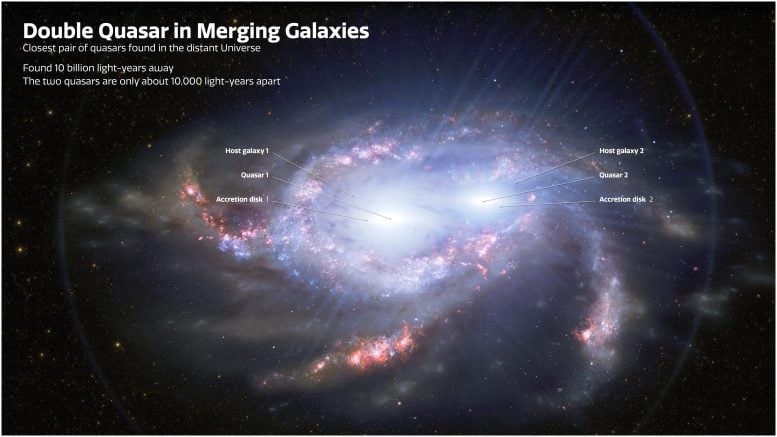
Astronomers have discovered two pairs of quasars in the distant Universe, about 10 billion light-years from Earth. In each pair, the two quasars are separated by only about 10,000 light-years, making them closer together than any other double quasars found so far away. The proximity of the quasars in each pair suggests that they are located within two merging galaxies. Quasars are the intensely bright cores of distant galaxies, powered by the feeding frenzies of supermassive black holes. One of the distant double quasars is depicted in this illustration. Credit: International Gemini Observatory/NOIRLab/NSF/AURA/J. da Silva
To focus their search, the researchers first identified 15 quasars for further investigation using the Sloan Digital Sky Survey, a three-dimensional map of objects in the night sky. From this list of 15 quasars, they then used observations from the Gaia spacecraft to identify four potential quasar pairs.[4] Finally, these candidates were imaged with the Hubble Space Telescope, which visually resolved two quasar pairs, giving this novel method a success rate of 50%.
The team then used the Gemini Multi-Object Spectrograph (GMOS) on Gemini North (located on Maunakea in Hawai‘i) to verify the discovery and further investigate one of the quasar pairs.[5] The combination of the sensitivity of GMOS and superb observing conditions allowed the team to resolve individual spectra from both quasars in the pair.[6] These spectra provided the team with independent measurements of the distance to the quasars and their composition, as well as confirming that the two quasars are indeed a pair rather than a chance alignment of a single quasar with a foreground star.
“The Gemini observations were critically important to our success because they provided spatially resolved spectra to yield redshifts and spectroscopic confirmations simultaneously for both quasars in a double,” explained Yu-Ching Chen, a graduate student at the University of Illinois who is on the discovery team. “This method unambiguously rejected interlopers due to chance superpositions such as from unassociated star-quasar systems.”
While the team members are confident in their discovery, there is a small possibility that they have actually observed double images of single quasars. These astronomical doppelgängers can be formed by gravitational lensing, which occurs when an intervening massive galaxy distorts and splits the light from a distant object, often resulting in multiple images of that object. The researchers are convinced that this is highly unlikely, however, as they could not detect any foreground galaxies in their observations.
With their method successfully demonstrated, the researchers now plan to search for more quasar pairs, building up a census of double quasars in the early Universe.
“This proof of concept really demonstrates that our targeted search for dual quasars is very efficient,” concluded Hsiang-Chih Hwang, a graduate student at John Hopkins University and the principal investigator of the Hubble observations. “It opens a new direction where we can accumulate a lot more interesting systems to follow up, which astronomers weren’t able to do with previous techniques or datasets.”
“This exciting investigation illustrates yet again the discovery potential of combining archived survey data with new, focused observations from state-of-the-art facilities,” said Martin Still, Gemini Program Officer at NSF. “The international Gemini Observatory proved to be the ideal instrument to confirm the identity of these black holes and characterize their environment.”
Notes
- By comparison, our home galaxy, the Milky Way, is around 100,000 light-years across.
- Distance and time are entwined in astronomy. The farther away astronomical objects are, the longer it takes for their light to reach us on Earth. In the Solar System, for example, it takes sunlight just over 8 minutes to reach Earth, meaning we see the Sun as it was 8 minutes ago. On a far grander scale, we can observe distant galaxies as they were billions of years ago — offering astronomers a window onto the early Universe. One pair of quasars has a redshift of 2.17, and the pair that Gemini spectroscopically resolved has a redshift of 2.95.
- As these black holes consume infalling matter from their surroundings, they produce an intense torrent of radiation across the electromagnetic spectrum. The amount of energy released is enormous, enough to outshine entire galaxies, and makes quasars bright beacons in the night sky.
- The European Space Agency’s Gaia spacecraft measures the positions and distances of astronomical objects with painstaking precision. Gaia measures how the positions of stars subtly shift as Earth orbits the Sun, an effect known as parallax. Distant quasars are much too far from Earth to have measurable parallaxes, but the researchers realized that quasar pairs could mimic the motion of nearby stars. While these quasar pairs appear to be single points in the Gaia data, random fluctuations in the brightness of each quasar could make the pair resemble a nearby star “jiggling” from side to side. Identifying quasars with this apparent jiggling motion provided the team with a list of quasar pair candidates for further investigation with Hubble.
- The Gemini observations were awarded through Director’s Discretionary Time (DDT), a small portion of observing time that is reserved for testing new methods or responding to unexpected astronomical events. DDT can also be used for high-risk, high-reward observations — such as the ones in this discovery.
- The emission spectrum of an astronomical object is a measure of how intensely the object emits light at different wavelengths. This can provide astronomers with insights into the properties of an object, such as its chemical composition, mass, temperature, and distance.
More information
This research was presented in the paper “A hidden population of high-redshift double quasars unveiled by astrometry” in the journal Nature Astronomy.
Reference: “A hidden population of high-redshift double quasars unveiled by astrometry” by Yue Shen, Yu-Ching Chen, Hsiang-Chih Hwang, Xin Liu, Nadia Zakamska, Masamune Oguri, Jennifer I-Hsiu Li, Joseph Lazio and Peter Breiding, 1 April 2021, Nature Astronomy.
DOI: 10.1038/s41550-021-01323-1
The team is composed of Yue Shen (Department of Astronomy and National Center for Supercomputing Applications, University of Illinois at Urbana-Champaign), Yu-Ching Chen (Department of Astronomy, University of Illinois at Urbana-Champaign), Hsiang-Chih Hwang (Department of Physics and Astronomy, Johns Hopkins University), Xin Liu (Department of Astronomy and National Center for Supercomputing Applications, University of Illinois at Urbana-Champaign), Nadia Zakamska (Department of Physics and Astronomy, Johns Hopkins University), Masamune Oguri (Research Center for the Early Universe, Department of Physics, and Kavli Institute for the Physics and Mathematics of the Universe, University of Tokyo), Jennifer I-Hsiu Li (Department of Astronomy, University of Illinois at Urbana-Champaign), Joseph Lazio (Jet Propulsion Laboratory, California Institute of Technology), and Peter Breiding (Department of Physics and Astronomy, West Virginia University).


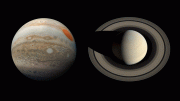
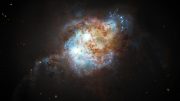
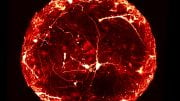



Be the first to comment on "Black Hole Pairs Found in Distant Merging Galaxies Provide Crucial Insight Into the Early Universe"